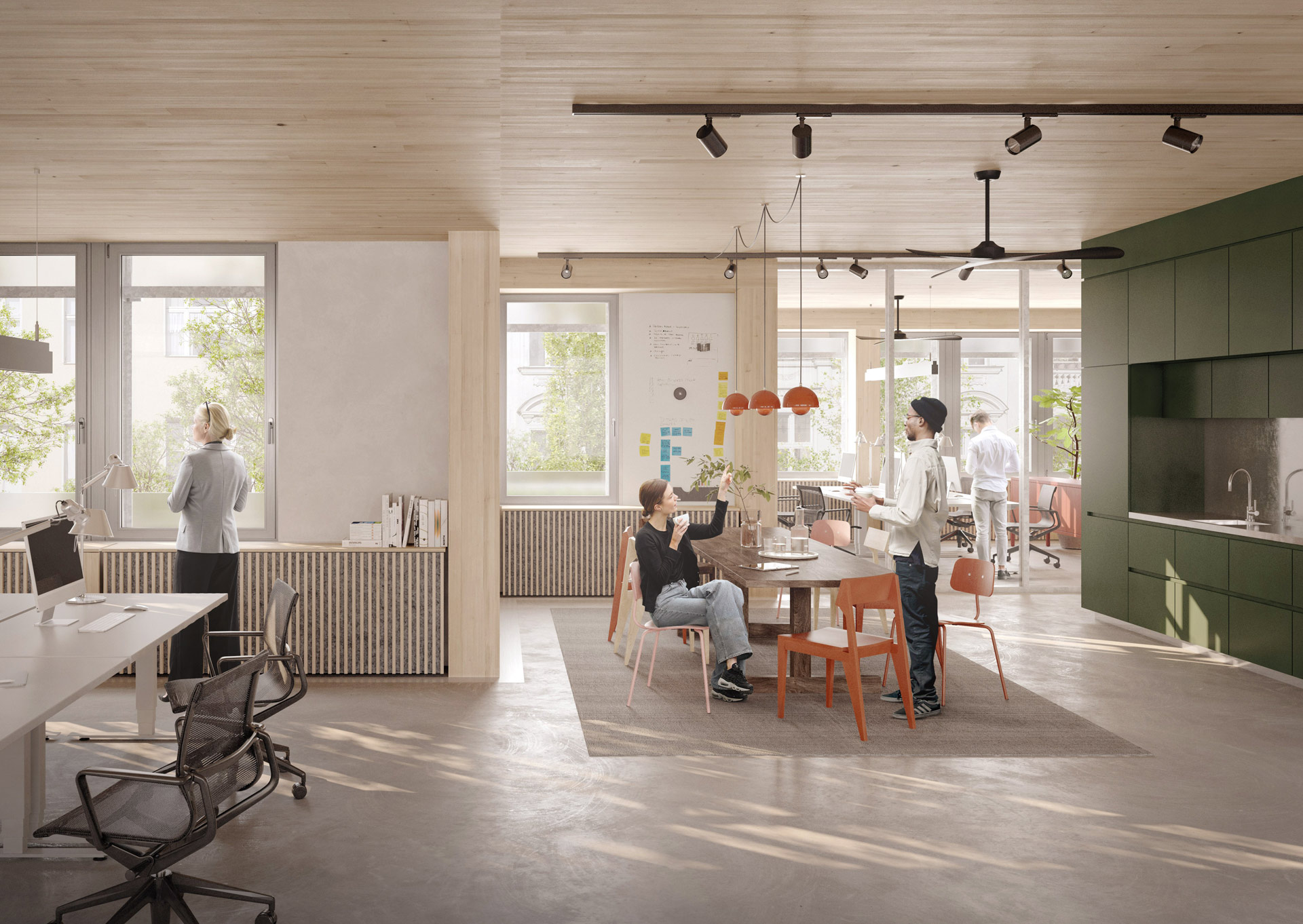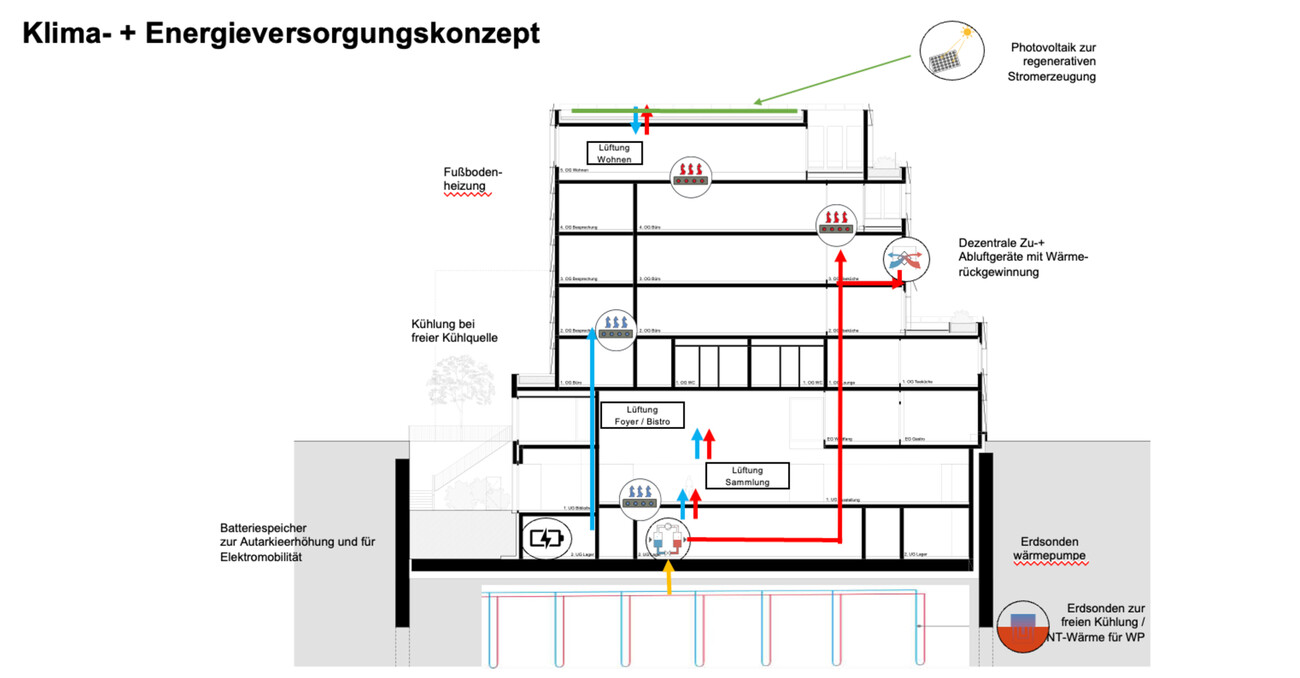BILDLABOR Kleistpark – New Building for Museum, Collection, and Artworking, Berlin, Germany

A new building with two basement levels and four office floors required a sustainability concept that emphasizes high spatial comfort and meets the needs of the displayed art. This concept prioritizes passive measures, including facade quality, natural ventilation, thermally activated storage masses, and geothermal heat. The office floors utilize timber-concrete composite ceilings, and the windows are equipped with wind-stable external textile sun protection, providing excellent thermal protection during summer and good glare control while ensuring views. Operable windows facilitate natural ventilation.
Decentralized facade air supply units deliver fresh air to the office spaces based on demand, featuring efficient heat recovery for reheating or cooling incoming air. In pulse operation, fresh outside air is gradually introduced into the room; after about 20 seconds, the direction of airflow reverses, expelling exhaust air through the facade. This method ensures optimal air quality without drafts and eliminates the need for air distribution ducts in the office area. Each room can individually adjust air volume and temperature, with devices automatically regulating to maintain comfortable conditions, entering standby mode when unoccupied. The efficient fans have a low power consumption.
The decentralized modules in office spaces are designed for easy maintenance, while integrated floor activation provides additional temperature control. A central ventilation unit ensures fresh air enters through wall-integrated supply outlets without drafts, slowly dispersing in the room. Exhaust air flows through overflow into bathrooms and kitchens before returning to the central unit, achieving optimal air quality with minimal heat loss and integrated heat recovery. Ventilation flaps allow for natural ventilation at any time.
Exhibition areas on the ground and basement levels benefit from solid concrete construction, which supports a consistent indoor climate. Airlocks and revolving doors separate outdoor spaces from adjacent offices and public areas. The central fresh air supply ensures necessary air exchange, maintaining conditions for the art 95% of the time. Under normal operation, about 1.3 air changes per hour are sufficient, with the system capable of tripling that during peak occupancy. Radiant piping in the floor provide silent cooling in summer and temperature control in winter. Short-term fluctuations in indoor climate are acceptable, occurring only during peak occupancy for a few hours each year.
A reversible geothermal heat pump system (approximately 80 kW heating and 100 kW cooling capacity) is designed to utilize geothermal borehole heat exchangers up to 100 meters deep. The design ensures a balanced heat withdrawal and input to the ground. Additionally, PV modules on the flat roof generate sustainable electricity, offsetting roughly 15% of annual operational emissions.

